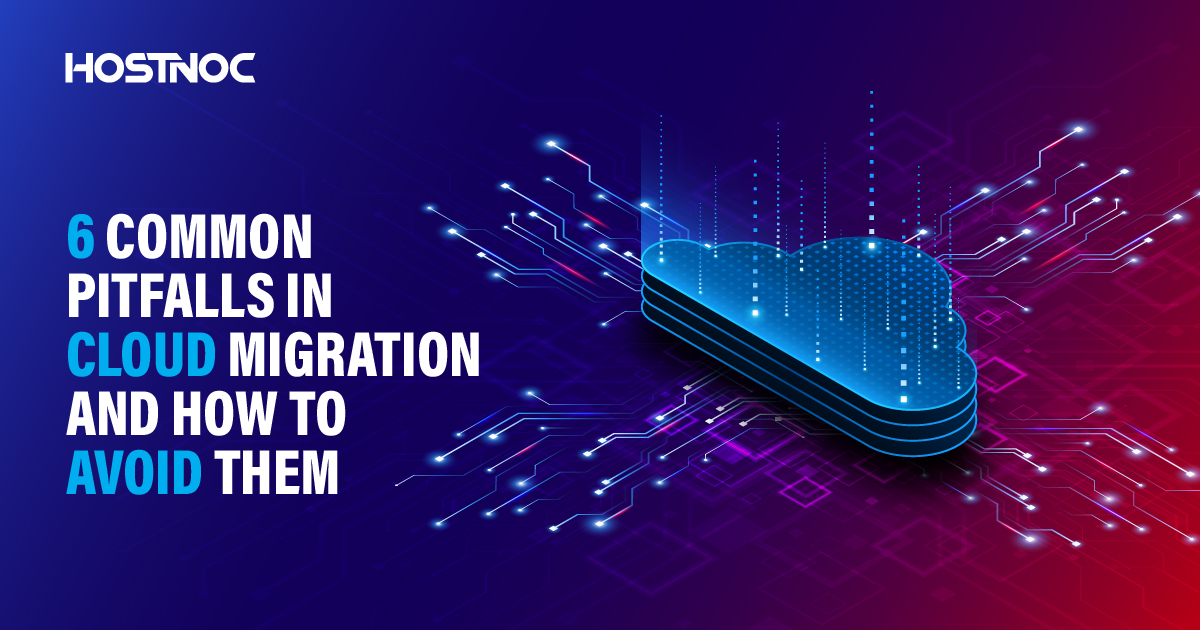Blogs

How To Troubleshoot SSH Permission Denied (PublicKey) Error?
July 24, 2024
7 Shocking Stats from IBM’s Cost of Data Breach Report 2024
July 29, 202410 Cloud Cost Optimization Mistakes You Should Never Make
Cloud Cost Optimization offers tremendous benefits in scalability, flexibility and cost-efficiency. However, it’s easy to make mistakes that can lead to unexpected costs swelling your cloud bill. Avoiding common pitfalls is crucial to optimizing your cloud spending. From inadequate monitoring and inefficient resource allocation to lack of automation and failure to right-size, we will uncover the missteps that plague many organizations’ cloud journeys.
With proper understanding and planning, you can sidestep these errors to gain the most value from your cloud investment. The cloud promises vast potential for businesses, but realizing its full economic advantages requires vigilance. Heed these lessons to maximize performance and minimize waste in the cloud. With insight into the most damaging oversights, you can execute a prudent Cloud Cost Optimization strategy and fully capitalize on the cloud’s possibilities.
In this article, we will explore the top 10 cloud cost optimization mistakes that you should steer clear of.
Cloud Cost Optimization offers tremendous benefits in scalability, flexibility and cost-efficiency. However, it’s easy to make mistakes that can lead to unexpected costs swelling your cloud bill. Avoiding common pitfalls is crucial to optimizing your cloud spending. From inadequate monitoring and inefficient resource allocation to lack of automation and failure to right-size, we will uncover the missteps that plague many organizations’ cloud journeys.
With proper understanding and planning, you can sidestep these errors to gain the most value from your cloud investment. The cloud promises vast potential for businesses, but realizing its full economic advantages requires vigilance. Heed these lessons to maximize performance and minimize waste in the cloud. With insight into the most damaging oversights, you can execute a prudent Cloud Cost Optimization strategy and fully capitalize on the cloud’s possibilities.
In this article, we will explore the top 10 cloud cost optimization mistakes that you should steer clear of.
- 10 Cloud Cost Optimization Mistakes You Should Never Make
- Not Right-Sizing Instances
- Paying for Idle Load Balancers
- Overprovisioning Storage
- Neglecting to Shut Down Development and Test Environments
- Not Utilizing Auto-Scaling Effectively
- Overpaying for Reserved Instances
- Not Scaling Back Unneeded Resources
- Using Inflexible Pricing Models
- Not Enforcing Tagging Discipline
- Lacking Visibility into Cost Data
10 Cloud Cost Optimization Mistakes You Should Never Make
Here are ten Cloud Cost Optimization mistakes you should never make.
Not Right-Sizing Instances
One of the most common mistakes is having oversized instances running. When you first migrate to the cloud, you typically lift-and-shift your workloads without resizing instances to fit current needs. Over time, your application usage and traffic patterns change, but your instances remain the same.
Best practice is to continuously monitor utilization metrics and right-size instances to ensure you are running the most cost-optimal instance size. Utilization should be in the 40%-80% range for optimum efficiency. Services like Amazon Web Services Cost Explorer make this easy by providing instance right-sizing recommendations. The savings from right-sizing can be up to 66%.
Paying for Idle Load Balancers
Load balancers distribute traffic across instances and are crucial for production workloads. However, many teams forget to delete old and unused load balancers. These idle load balancers can needlessly burn through your budget. Make sure to closely track your usage and architecture diagrams, deleting any idle load balancers. For load balancers with fluctuating traffic, enabling auto-scaling is preferable to manual resizing. It will spin up and down based on load. This keeps you maximally agile while minimizing waste.
Overprovisioning Storage
When estimating storage needs, teams typically overprovision to be safe. Storage is then allocated but left unused. With cloud storage offerings like S3, you only pay for what you actually use, so overprovisioning directly wastes money. A better approach is to start with smaller storage volumes and scale up as needed. Enable monitoring to track usage growth and optimize storage in line with your actual needs. Many teams find they can reduce their provisioned storage by 30-50% by eliminating overprovisioning waste.
Neglecting to Shut Down Development and Test Environments
Developers often spin up environments for testing or short-term projects and then neglect to shut them down afterwards. With developers spinning up new environments daily, costs can spiral out of control quickly. Implementing auto-shutdown of non-production resources is a simple way to avoid waste. You can tag dev/test instances differently than production and automatically schedule shutdown daily or weekly. Setting default expiration dates on test resources also helps curb waste.
Not Utilizing Auto-Scaling Effectively
Auto-scaling allows instances to spin up and down based on metrics like CPU utilization. However, many teams enable auto-scaling without configuring it properly. This causes it to not scale effectively in response to load changes.
Carefully test and tweak your auto-scaling threshold and cool down periods to ensure auto-scaling engages appropriately for your workload patterns. Use a small instance size as your base with aggressive scale-out rather than relying solely on large instance sizes. Monitor metrics like utilization, scale-out/in events and cost to optimize over time.
Check our deal in Managed Cloud Hosting
Overpaying for Reserved Instances
Reserved instances allow you to get significant discounts on EC2 costs by pre-purchasing capacity for 1-3 years. However, getting the best discount requires matching your reserved instance size and term to your actual projected usage. Utilize reservation recommendations and analytics services like Amazon Web Services Cost.
Explorer to make optimal reserved instance purchases. Start conservatively with partial upfront or no upfront to retain flexibility. Monitor utilization against your reservations and adjust purchases if needed. The right reserved instance coverage can save you up to 72% off on-demand costs.
Not Scaling Back Unneeded Resources
When launching new features or applications, additional cloud resources are often provisioned. Over time, some of these resources become underutilized relics that are no longer optimized for current needs and traffic levels. However, they continue running and costing unless intentionally scaled back.
Get in the habit of regularly reviewing usage metrics and architecture diagrams to identify idle or underutilized resources that can be decommissioned. Include this analysis in your regular Cloud Cost Optimization reviews. You may uncover resources that are no longer needed or that can be right-sized to continually improve efficiency.
Read more : 7 Cloud Trends That Will Impact IT Industry In 2024
Using Inflexible Pricing Models
With cloud computing, you can choose between a variety of pricing models for resources – on demand, spot, reserved, etc. Selecting the right pricing model for each use case is key to maximizing savings. However, many teams simply leave resources on less efficient pricing models like on-demand.
Analyze the patterns, life cycle and workload variability of each application and service. Identify the optimal pricing model aligning with actual usage. Spot instances can offer savings of 90% or more for batch workloads with flexible start/end times. Short-term workloads are better suited for on-demand or preemptible instances.
Not Enforcing Tagging Discipline
Amazon Web Services tagging allows you to categorize resources by business tags like project, application, cost center etc. However, many teams do not enforce consistent tagging, resulting in untracked shadow IT and resources. This makes cost monitoring, allocation and optimization extremely difficult.
Institute a mandatory cross-team tagging standard supported by policies and automation guardrails in infrastructure as code. Regularly audit tagging completeness and compliance. Integrate tags with billing systems to enable showback/chargeback and granular cost analysis by tag. Tagging discipline is essential for understanding total cost of ownership.
Lacking Visibility into Cost Data
You can only optimize what you can see. Many organizations lack visibility into their actual cloud consumption, making cost optimization guesswork. Without good visibility, they leave savings opportunities on the table. Ingest cloud cost management data into a cost analytics tool.
Monitor utilization and spend metrics across accounts, services, resources and tags. Create dashboards, alerts and reports that provide visibility into consumption patterns and trends. Arm your teams with real-time visibility to make informed optimization decisions rather than guesses.
The cloud’s consumption-based pricing offers enormous agility and scalability but it can also lead to wasted spend without careful and continuous optimization. Avoiding these ten common mistakes allows you to maximize cloud value while minimizing waste. With the right visibility, governance and optimization practices, your organization can make the cloud a driver of efficiency rather than cost overruns.
Which of these cloud cost optimization mistakes are you making? Share it with us in the comments section below.
Your skills are elite. Your server should be too.
Cores
RAM
Storage
Location
Monthly Price
Link
Specs 1GB/1 CPU
Disk 25GB SSD
Bandwidth 1000 GB Transfer
$11.25 /month
Buy Now
Specs 2 GB/1 CPU
Disk 50 GB SSD disk
Bandwidth 2 TB Transfer
$30.00 /month
Buy Now
Specs 2GB / 2 CPUs
Disk 60 GB SSD disk
Bandwidth 3 TB Transfer
$37.50 /month
Buy Now
Specs 4 GB / 2 CPUs
Disk 80 GB SSD disk
Bandwidth 4 TB transfer
$45.00 /month
Buy Now
Specs 8 GB / 4 CPUs
Disk 160 GB SSD disk
Bandwidth 5 TB transfer
$75.00 /month
Buy Now
Muhammad Osama
Featured Post
6 Common Cloud Migration Pitfalls and How To Avoid Them
Cloud migration can be a daunting process for many organizations. Whether you’re moving to the cloud for increased flexibility, cost savings, or scalability, it’s easy to […]
Current State of Cloud Security: 7 Shocking Statistics That Will Blow Your Mind
Cloud always has a bad reputation when it comes to security and privacy. The advantages, such as flexibility, scalability, and lower costs, tend to come to […]
How Cloud Computing Essentials Unlock Benefits for Businesses?
Table of Contents Understanding Cloud Computing Essentials Benefits of Cloud Computing Essentials 1. Cost Efficiency 2. Scalability and Flexibility 3. Improved Collaboration and Accessibility 4. Enhanced […]












